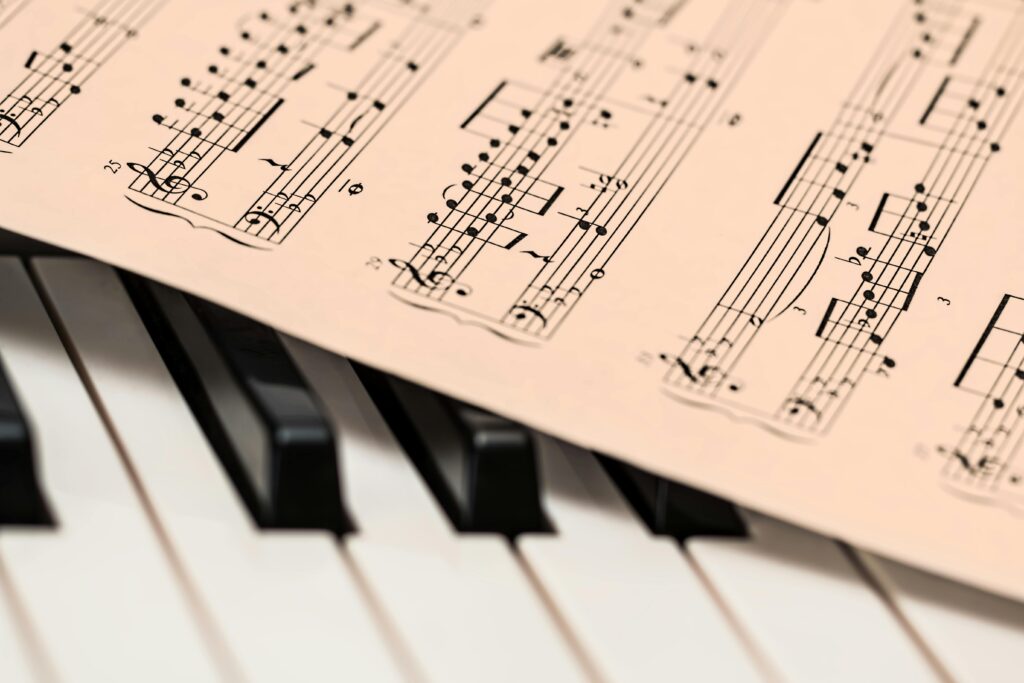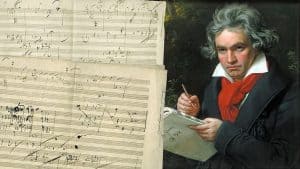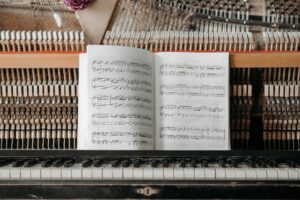Domenico Scarlatti, one of the most inventive composers of the Italian Baroque, left an indelible mark on keyboard music with his groundbreaking sonatas.
Known for pushing the boundaries of harpsichord technique, Scarlatti’s sonatas are full of daring twists, virtuosic flair, and emotional depth, keeping both pianists and audiences hooked centuries later.
In this article, we dive into some of his most iconic sonatas, exploring their lasting impact and offering tips on how to tackle these brilliant pieces.
- Fall in love with the music - Learn your favorite songs, at a level suitable for you.
- Enjoy interactive piano lessons - Explore courses covering music theory, technique chords & more.
- Get real-time feedback - Skoove's feedback tells you what went well and what needs practice.

Understanding Scarlatti’s sonata style
Domenico Scarlatti’s sonatas are distinctive for their innovative approach to form and technique. Composed primarily for the harpsichord, these works showcase Scarlatti’s deep understanding of the instrument’s capabilities.
Each sonata typically adheres to a binary form, consisting of two contrasting sections, though Scarlatti often imbued his music with complex rhythmic patterns and harmonic explorations that set his sonatas apart from other Baroque keyboard compositions in sonata form.
Technical and stylistic features
Scarlatti’s sonatas are known for their technical demands, including rapid passages, intricate hand independence and crossings, and challenging rhythms. The composer’s use of ornamentation and dynamic contrasts adds layers of complexity and expressiveness to the music.
Unlike many of his contemporaries, Scarlatti frequently avoided rigid adherence to traditional forms, instead opting for a more flexible and inventive approach. This stylistic freedom allowed him to explore new musical ideas and create works that are both challenging and rewarding to perform.
Influence of Spanish and Portuguese music
Scarlatti’s time spent in Spain and Portugal had a profound influence on his compositional style. Many of his sonatas incorporate elements of Spanish dance forms, such as the fandango and the cembalo, which add a distinctive rhythmic and melodic character to his music.
This integration of local musical styles into his compositions not only enriched Scarlatti’s work but also contributed to the development of the keyboard repertoire in the Baroque period.
Notable Scarlatti sonatas
Now that we have some basic understanding of Scarlatti’s style and influences, let’s dive into a collection of the best Scarlatti sonatas.
Sonata in E Major, K. 380 (K. 189)
The Sonata in E Major, K. 380, is one of Scarlatti’s most celebrated pieces. Composed in 1738, this sonata is known for its energetic and vibrant character. Scarlatti’s use of hand crossings and rapid passages creates a sense of momentum and excitement, showcasing his technical prowess and innovative approach to composition. The work begins with a lively Allegro, characterized by its rhythmic drive and virtuosic demands.
The second section of the Scarlatti sonata in E major, marked Adagio, provides a contrast to the exuberant opening. This slower movement is characterized by its lyrical and expressive qualities, offering a moment of reflection within the sonata.
The interplay between the fast and slow sections highlights Scarlatti’s ability to blend technical brilliance with musical expression, making this sonata a favorite among performers.
Sonata in D Minor, K. 141
The Sonata in D Minor, K. 141, is known for its dramatic and intense character. Scarlatti’s use of dynamic changes and harmonic exploration adds depth to the music, creating a sense of tension and release. Composed in 1739, this sonata opens with an Allegro that features striking contrasts and complex rhythmic patterns.
The second section of the sonata, Andante, offers a more contemplative and somber mood. This movement showcases Scarlatti’s skill in creating emotional depth within a compact form, with its lyrical lines and expressive melodies. The contrast between the Allegro and Andante sections highlights Scarlatti’s ability to convey a wide range of emotions through his music.
Sonata in A Major, K. 208 (K. 188)
The Sonata in A Major, K. 208, composed in 1739, is a shining example of Scarlatti’s harmonic and rhythmic innovation. Scarlatti’s use of dissonance and unexpected modulations adds a sense of unpredictability to the music, creating a dynamic and engaging listening experience. The sonata begins with a lively Allegro, characterized by its playful motifs and vibrant rhythms.
The second section of the sonata, marked Adagio, provides a contrastingly serene and reflective atmosphere. This movement showcases Scarlatti’s ability to create expressive and nuanced music, with its delicate phrasing and subtle dynamic changes. The interplay between the energetic Allegro and the contemplative Adagio highlights Scarlatti’s skill in blending contrasting moods within a single work.
Sonata in C Major, K. 159
The Sonata in C Major, K. 159, composed in 1738, is renowned for its clarity and elegance. The piece opens with a bright and buoyant Allegro, featuring clean lines and a rhythmic drive that captures the listener’s attention. Scarlatti’s use of simple yet effective harmonic progressions creates a sense of freshness and vitality in the music.
The second section of the sonata, marked Andante, provides a lyrical contrast to the lively opening. This movement showcases Scarlatti’s ability to create expressive and nuanced music, with its flowing melodies and gentle dynamics. The balance between the energetic Allegro and the serene Andante highlights Scarlatti’s skill in crafting well-rounded and engaging compositions.
Sonata in G Major, K. 13
The Sonata in G Major, K. 13, composed in 1738, is valued for its pedagogical benefits as well as its musical qualities. The sonata begins with a brisk Allegro, featuring Scarlatti’s characteristic rhythmic vitality and technical challenges. The use of rapid passages and intricate hand crossings provides an opportunity for pianists to develop their technical skills and improve their dexterity.
The second section of the sonata, marked Andante, offers a more relaxed and lyrical contrast. The sonata’s combination of technical demands and musical expression makes it a valuable addition to any pianist’s repertoire.
Scarlatti had many other sonatas. The video below takes you through some of his most popular works. Have a listen and get inspired.
Tips for playing Scarlatti sonatas
Playing Scarlatti’s sonatas presents both technical and interpretative challenges. Let’s check out some strategies you can use to practice Scarlatti sonatas. These strategies are also applicable to many other types of piano music you might be practicing.
- Focus on technique: Scarlatti’s sonatas often feature rapid passages, intricate hand crossings, and complex rhythms in music. Practice slowly and gradually increase the tempo to build precision and control. Use a metronome to help maintain a steady tempo and develop rhythmic accuracy.
- Understand the style: Scarlatti’s music is characterized by its rhythmic vitality and expressive contrasts. Pay attention to the stylistic nuances, such as the use of ornamentation and dynamic changes, to capture the true essence of the music. Study recordings of Scarlatti’s sonatas to gain insights into different interpretative approaches.
- Use proper fingering: Experiment with different fingerings to find the most comfortable and effective way to play difficult passages. Scarlatti’s music often requires agile and flexible fingerwork, so find fingerings that allow for smooth and accurate playing.
- Explore different interpretations: Listen to various recordings of Scarlatti’s sonatas to gain insights into different interpretative approaches. This can help you develop your own interpretation and performance style. Consider attending live performances or masterclasses to hear how other pianists approach Scarlatti’s music.
- Practice with expression: Scarlatti’s sonatas are not just technical exercises; they are also expressive works that require attention to musical phrasing and dynamics. Practice playing with sensitivity to the musical phrases and dynamics, and strive to convey the emotional content of the music.
The legacy of Scarlatti’s sonatas
Scarlatti’s sonatas have had a profound and lasting impact on the world of keyboard music. His innovative approach to composition and his exploration of new musical ideas have influenced many composers and continue to inspire pianists today.
For pianists seeking to explore and master Scarlatti’s sonatas, Skoove offers an excellent resource. With Skoove’s interactive piano lessons, you can delve into Scarlatti’s works and other classical pieces, receiving real-time feedback and guidance. Skoove’s lessons are designed to help pianists of all levels improve piano technique, develop their musicality, and gain a deeper understanding of the repertoire.
Whether you’re a beginner or an advanced pianist, Skoove’s comprehensive piano courses can support your journey with practical exercises and personalized feedback. By incorporating Skoove into your practice routine, you can enhance your skills and enjoy the beauty of Scarlatti’s music.
Try some Scarlatti today!
Domenico Scarlatti’s sonatas showcase his inventive genius and bold approach to the keyboard, pushing the limits of Baroque music. His fearless exploration of new musical ideas has shaped the keyboard repertoire in lasting ways.
If you’re ready to take on Scarlatti’s sonatas with confidence, check out Skoove’s piano lessons. With expert guidance, you’ll refine your technique, explore new pieces, and experience the thrill of playing Scarlatti’s music like never before. Embrace the challenge and discover the beauty of these sonatas with Skoove’s engaging and supportive platform.
Author of this blog post:
Susana Pérez Posada

With over seven years of piano education and a deep passion for music therapy, Susana brings a unique blend of expertise to Skoove. A graduate in Music Therapy from SRH Hochschule Heidelberg and an experienced classical pianist from Universidad EAFIT, she infuses her teaching with a holistic approach that transcends traditional piano lessons. Susana’s writings for Skoove combine her rich musical knowledge with engaging storytelling, enriching the learning experience for pianists of all levels. Away from the piano, she loves exploring new places and immersing herself in a good book, believing these diverse experiences enhance her creative teaching style.
Published by Lydia Ogn from the Skoove team















